Dance of the Fairies (Part 1)
“What are we looking at?”
“Shh!“
“But there’s nothing here!”
“There will be! Now be quiet!”
Cindy covered Joey’s mouth with her hand. He brushed it off, but did as she told him nonetheless. The two children huddled closer as they stared over the rocks at the empty field ahead.
“I still don’t get why you brought me here,” Joey whispered after five uneventful minutes.
“You will.” Cindy glanced up at the full moon just beginning to poke through the clouds. “It’s almost time.”
They sat quietly for another several minutes, waiting. Joey opened his mouth, about to complain that it was cold and this was boring and he wanted to go home, but the words never left his throat. Just then, a circle of light appeared in the middle of the field, in the very spot Cindy had pointed out when they arrived.
“C-Cindy?” Joey stammered, suddenly afraid. “W-What’s happening?”
But Cindy didn’t seem to notice her friend cowering beside her. She was too busy grinning as she leaned over the rock for a better view.
“Here they come!”
She quivered with excitement as little balls of light began to appear across the field. One by one, the floating lights materialized into tiny glowing figures with wings. Joey’s eyes grew wide as he stared into the field, unable to believe what he was seeing.
“Are those…?” he gasped. Cindy nodded without taking her eyes off the scene ahead.
“Fairies!”
The fairies all gathered around the circle of light in the middle of the field. One of them, who was slightly brighter than the rest and wore a crown on her head, raised her hands to call for silence, a request immediately respected by all the others. Cindy turned to Joey, who was now leaning over the rock beside her.
“That’s the fairy queen!” she whispered. The two of them watched quietly as the leader of the fairies began to speak.
“My children!” she said in a kind yet authoritative voice. “Tonight, let us give thanks to our Mother Earth for her bounty. Let us praise her, that we may never find ourselves wanting of her generosity. Let her know that we are eternally grateful for her kindness. So sing and be merry, my children! Tonight, we dance!”
The queen raised her hands again and all the fairies cheered. A small group beside her began to bang and strum on tiny instruments, and soon the air was filled with music. Cindy and Joey watched, enthralled, as some of the little glowing figures joined hands and danced around the center circle while others twirled through the air in pairs. It was a sight to take the breath away.
“Aren’t they beautiful?” Cindy sighed dreamily, her head in her hands. Joey nodded without even realizing.
“They really are.”
The children giggled as they watched the fairies dance and sing. Before long, they too found themselves getting caught up in the spirit of the music.
“May I have this dance?” Joey said in a mock grown-up voice as he stepped back and bowed to his friend. Cindy curtsied and waved an imaginary fan.
“I thought you’d never ask!”
The two friends laughed as they imitated the fairies, twirling around in circles until they were dizzy. Then…
“Hey!”
Cindy and Joey froze, their smiles vanishing instantly. They turned around slowly to see two glowing figures floating before them, watching them with wide, pale blue eyes.
“What are you doing here?” one of the fairies asked, his brow raised in suspicion. While Cindy and Joey exchanged awkward looks, the other fairy turned to her companion.
“Don’t frighten them, Eldan!” she said in a much softer tone, taking him by the arm. “They’re not hurting anyone. They’re just children!”
“Human children, Shea,” said the first fairy as he turned to his friend. “You know we don’t allow humans here. What would the queen have to say about this?”
“Why don’t we ask her?”
“You want to take them to the queen?”
“Why not?” Shea smiled. “They clearly like to dance too! I’m sure she wouldn’t mind. She might even be delighted to have them join us!”
Eldan glanced at the nervous children, then turned back to his companion and sighed in defeat. “Fine, if you say so. But if we get in trouble for this…”
“We won’t.” Beaming, Shea fluttered over to Cindy and Joey and extended her hand to them. “It’s okay, don’t be afraid. Come with us! We don’t bite!”
“Speak for yourself,” said Eldan, sparing a piercing look at Joey. The boy drew back at those words, but Shea calmed him with a gentle laugh.
“He’s joking, sweetie. This guy couldn’t hurt a fly if he wanted to!”
The fairy fluttered down between the children and reached out to touch their hands. Dazed, Cindy and Joey stepped forward as Shea led them by their forefingers out from behind the rocks and into the field, Eldan following close behind. They didn’t know what to expect, but of one thing they were certain: the night was about to get far more interesting.
To be concluded next Friday
Off The Bookshelf: A Fish Caught in Time – The Search for the Coelacanth
How about a new book recommendation for this year’s reading list? This one’s a little different from my other Off The Bookshelf entries as it’s actually a nonfiction tale, and a marine biology-themed one at that! I read this book last year for school, and I was so enraptured by this incredible true “scientific epic” that I had to share it on my blog.
So if you’ve never heard of the coelacanth, or you have but want to learn the details of its history, you’re in for a treat! I hope you’ll enjoy my review of this must-read book: A Fish Caught in Time: The Search for the Coelacanth by Samantha Weinberg.
Summary
A Fish Caught in Time tells the true story of the coelacanth (SEE-luh-kanth), one of the most mysterious and fascinating fishes (yes, “fishes“) in scientific history, as written by English journalist Samantha Weinberg. Originally published in 1999 by HarperCollins, the book recounts the events surrounding this prehistoric fish, from the shocking discovery of a living specimen (Latimeria chalumnae) in 1938 to the discovery and study of a second species (Latimeria menadoensis) 60 years later. The narrative relates these events from the perspective of the researchers who dedicated much of their time and resources to studying this fish, all of whom played an important role in the amazing story of the elusive “King of the Sea”.
Review
I read this book last year in preparation for a Vertebrate Zoology class I had to help teach as part of my Master’s program. My lesson was about the Sarcopterygii class of fishes, so my professor lent me his copy of A Fish Caught in Time as supplementary material for telling the story of the coelacanth. By the time I was done, I was ready to teach an entire semester on this one fish. I never thought I would feel so strongly about any one fish, but then again, the coelacanth is no ordinary fish.
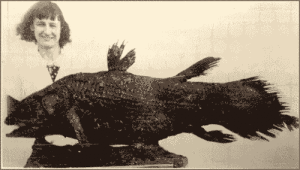
Marjorie Courtenay-Latimer with the modern coelacanth (Latimeria chalumnae) she discovered in 1938
To summarize, the coelacanth was long thought lost to history by the Cretaceous-Paleogene extinction event that wiped out three quarters of the plant and animal species living on Earth (most famously the dinosaurs). It was known only by its fossil record for (almost exactly) 100 years, until, to the world’s surprise and excitement, a living specimen was fished off the South African coast in 1938. Over the next six decades, the coelacanth would be the focus of global headlines, political plays, and scientific rivalries, all the while remaining an enigma to the world that it continues to captivate to this day.
A rare example of a nonfiction story told in a highly narrative form, A Fish Caught in Time does an excellent job of capturing the majesty and mystery of the coelacanth while staying true to the history of its discovery and study. Ms. Weinberg paints such a vivid picture of this 60-year-long story that I couldn’t help but be completely drawn in, as if I were living the story along with the real-life characters: the excitement of discovering the coelacanth wasn’t extinct after all, the rush to find out where it had been hiding for the past 65 million years, the desperation to not only capture a living specimen but keep it alive at the surface, the awe that only a lucky few in history have ever known of watching this deep-sea fish swim in its natural habitat. I’d even go as far as to say that it’s impossible to read this book and not fall in love with the coelacanth!
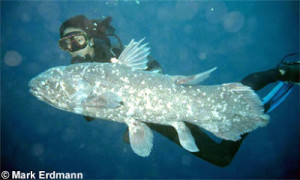
Arnaz Erdmann swimming with the Indonesian coelacanth (Latimeria menadoensis)
A fair note of warning: oftentimes the story focuses more on the researchers who dedicated their lives to studying the coelacanth than on the coelacanth itself. Readers who hope to gain an insight exclusively into the life of the fish may find this a bit off-putting, but then again, it hardly makes sense to attempt to recount the history around the animal without offering even a glimpse into the lives of the people who shaped that history. It’s much more than a story about a fish; it’s a lesson about what it means to be a researcher. It takes intelligence, curiosity, patience, an unquenchable thirst for knowledge, and an unrelenting passion for science, all of which shine through the pages of this brilliant narration of scientific truth.
Overall, A Fish Caught in Time is a captivating read that any science enthusiast will enjoy. I owe much of my appreciation for the coelacanth to this book, and I recommend it to anyone who wants to immerse themselves in a world of marine biology without being overwhelmed by the technicalities of it all. As quickly becomes evident from the first chapter, science doesn’t have to be fictional to blend well with creative writing!
Inspiration
I love science and I love a good story, but it’s rare that I get to enjoy both at the same time, or at least in the same book. A Fish Caught in Time offers an opportunity to glimpse the joy and passion that goes into conducting good science by presenting it in an enjoyable narrative format. Though much research has gone into understanding the coelacanth, A Fish Caught in Time never conveys that research in a manner too difficult for the layman to comprehend or appreciate, making it an unusual kind of literary gem: a scientific subject made accessible to the general public, that is, a community of non-scientific readers.
So if you appreciate science and a good story based on true events, A Fish Caught in Time may be just the inspiration you need for your creative writing! It certainly has been for me; in my opinion, there’s never too much writing inspiration to be found in science!
Word of the Week: Indolent
Word: indolent
Pronunciation: IN-də-lənt
Part of Speech: adjective
Definition: wanting to avoid activity or exertion; lazy
Source: Oxford Dictionaries
…and as for Mr. Hurst, by whom Elizabeth sat, he was an indolent man, who lived only to eat, drink, and play at cards…
– Pride and Prejudice (Jane Austen, 1813)
Oh yes, I’m learning so many new words from Pride and Prejudice! Similar to last week’s entry, today’s Word of the Week comes from a description of one of the story’s supporting characters, this time Mr. Hurst. While dining with Bingley and company during her stay at Netherfield, Elizabeth finds herself seated next to Mr. Bingley’s brother-in-law, a gentleman so dull and lazy that his interests are limited to dining and playing cards. At one point in the story, when everyone else in the room is too preoccupied with books and conversation to play cards with him, he uses the time to take a nap on the sofa instead! Small wonder such an “indolent” character never made it into the films!
An “indolent” person is someone who likes to avoid activity, that is, who is inherently lazy. The word arose in the mid 17th century and comes from the Latin noun indolentia, meaning “freedom from pain”. This noun is composed of the particle in “not” and the verb dolere “to suffer pain”.
The word “indolent” is primarily used to describe people, but it also serves a function in medical terminology as a definition for a disease condition that causes little or no pain. More specifically, it can also refer to a persistent ulcer that is “slow to develop, progress, or heal”. It shouldn’t be confused with the adjective “insolent”, which means “showing a rude and arrogant lack of respect”, though I suppose in certain cases a person can appear to be both. If you can find inspiration in people who are lazy to the point of actively avoiding activity or exertion, you may have room for some “indolent” characters in your stories!
What are your thoughts on this word? Any suggestions for future “Word of the Week” featured words?
Too Many Variables
I really thought amplifying DNA would be easy. Molecular biology seemed simple enough in theory: extract, amplify, sequence, analyze. But I had no idea how difficult it would be to work with so many variables.
After my third failed polymerase chain reaction attempt, I started to wonder what I could be doing wrong.
Was I using the right concentrations of each reagent? Buffer at 1X, MgCl2 at 1.5mM, dNTPs at 200µM each?
Were the primers optimized for my DNA template? Had they been designed for the correct gene? Did they have the right length, melting temperatures, GC content?
Were the PCR cycles optimized? Was I using an annealing temperature within a few degrees of the primers’ melting temperatures? Were the denaturation and extension times long enough to assure proper replication of the DNA fragments?
Was the electrophoresis gel being prepared and run correctly? 1% agarose gel with GelRed in TAE buffer, run for about 10V per centimeter between the electrodes?
Or what if – shudder – the problem was in the DNA itself? What if the extraction had failed, and I’d have to start the entire project over from Square One?
No, no, calm down, I told myself. One step at a time. First, eliminate the variables you know aren’t the problem. There’s no reason the extraction should have failed; the quantification returned optimal concentrations of DNA. These are the same universal primers used in countless other studies, specifically designed for the cytochrome-b gene. The thermocycler and the electrophoresis apparatus have already worked before. There’s nothing wrong with the gel because the ladder and primers appear in the UV photos. That’s already five ticks off the checklist.
Now start with a positive control, a sample you know has worked with these primers before. PCR #4: did it fail to amplify along with the others? Yes. Good, then the problem isn’t the DNA.
Next step: new aliquots. Replace the water, the buffer, the MgCl2, the dNTPs, even the primers. Everything must be fresh to minimize contamination. Double-check the concentrations before preparing the mix. PCR #5: still no bands in the gel. No problem; just move on to the next step.
Try altering the reagent concentrations. Use more DNA template, double the primers, increase the amount of MgCl2. PCRs #6-8: nothing. Don’t panic, it’s all part of the process. You’re zeroing in on the problem now.
Adjust the PCR procedure. Increase the number of cycles, raise the annealing temperature in increments of 2ºC, lengthen the initial denaturation and final elongation steps. PCRs #9-12: still nothing. It’s okay, every failure is just another step closer to success. These tears are totally normal; nothing to be ashamed of.
For weeks, I tried everything I could think of. I replaced the reagent aliquots three times. I used half a dozen standard PCR procedures from various troubleshooting references. I ran gradient tests and touchdown tests and hot-start tests. Zero, nothing, zip.
Finally, after over a month of PCR attempts and no results to show for it, I was at my wit’s end. One morning, when I was alone in the lab, I broke down into a sobbing mess. I couldn’t look at the thermocycler anymore, that beast of a machine that I had to work with every day. I felt like a knight facing off against the same dragon over and over, knowing that hours of battling would only get me burnt every single time.
So I resolved to take a break from it all. No more PCRs for a while, not until I could work up the energy to start trying again. Today, I would just sit at the desk and read papers while indulging in a bag of cookies. Stale cookies. Really stale cookies. Seriously, how old were these?
I turned the bag over to check the date on the back…and that was when it hit me. Could it be? Immediately I dropped the bag and ran to the freezer. The stock solutions were stored in the back of the bottom shelf; I searched through them one by one until at last I found what I was looking for, printed clear as day inside the lid of the Taq DNA polymerase box. “Expiration date: Oct 2010.” Of course! No wonder none of my reactions were working: the enzyme was over five years old!
My first grin in weeks spread across my face, and I was suddenly overcome with an urge to shout “Eureka!” I hurried to my professor’s office and told him about the expired reagent. He quickly ordered a new stock and it arrived within two weeks. Sure enough, the next PCR I ran yielded the most beautiful set of bright DNA bands I had ever seen in a gel. I wanted to kiss that UV photo. My very first successful DNA amplification! And it only took two months longer than expected.
Never again will I underestimate the work of a scientist. Molecular biology may seem simple in theory, but having learned my lesson the hard way, next time I’ll be prepared for the challenge of working with too many variables.
#WritersQuoteWednesday and #BeWoW – Albert Einstein
So I just discovered Silver Threading‘s Writer’s Quote Wednesday blogging event, a collaboration with Ronovan Writes‘ Be Writing on Wednesday event, and I thought to myself, “Hey, that sounds like fun! Maybe I should give it a try!” I do love quotes, after all, and writers can never have or share too much creative inspiration!
The quote I chose to share for this event is one of my all-time favorites: Albert Einstein’s wise words on the importance of imagination compared to knowledge.
I am enough of an artist to draw freely upon my imagination. Imagination is more important than knowledge. Knowledge is limited. Imagination encircles the world. – Albert Einstein
I first read the short version of this quote on a poster hanging in my seventh grade Science teacher’s classroom, and I remember that it instantly inspired me, especially since I had already decided by then that I wanted to be both a writer and a scientist. I always liked to believe that I could draw from both these sides of myself to succeed in life, that the imaginative artist in me would empower the knowledgeable scientist and vice-versa. This quote validates my belief that the power of the human mind is more than just what a person knows, and having come from one of the most brilliant minds in the world makes it all the more motivating. To this day, Einstein’s words remind me of the true meaning of education and intelligence: it’s not the number of facts you can memorize that matters, but the capacity you have to think and explore beyond the limits of this restricted world. Fellow writers, take heart: if you’re brave enough to set your imagination free, you can accomplish anything!
What’s your favorite inspirational quote? Be sure to check out #WritersQuoteWednesday and #BeWoW to share it with the rest of us!
#WritersQuoteWednesday is a weekly blogging event by Colleen Chesebro of Silver Threading. #BeWoW is a weekly blogging event by Ronovan Hester of Ronovan Writes. Be sure to check out both these authors’ blogs for your weekly dose of inspiration! Happy writing!

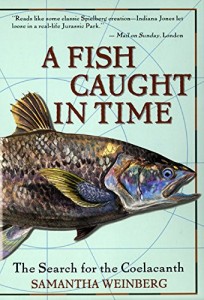
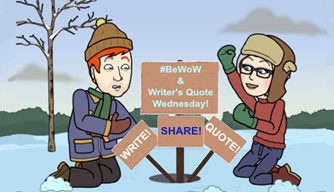
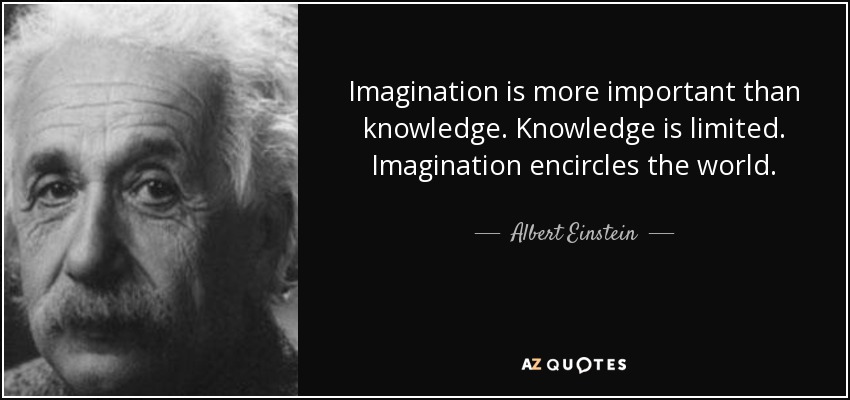

Recent Comments